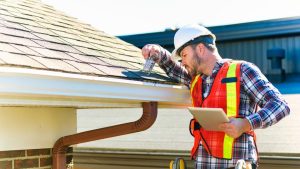
A roof drain is an essential component of any building’s construction. It helps maintain the integrity and longevity of the structure by effectively managing the flow of water off the roof. A well-designed roof drainage system is crucial in preventing water damage, leaks, and other issues that could compromise the building’s performance. This article will discuss everything you need to know about a roof drain, including their types, benefits, installation, and maintenance.
The Importance of a Roof Drain

The primary function of a roof drain is to channel water away from the roof surface. A roof system ensures that water doesn’t accumulate on the roof, preventing potential leaks, damage, and structural issues. Roof water outlets are especially important for flat roofs, as they are more susceptible to water pooling. A flat roof drain helps maintain the structural integrity of the building by preventing water from seeping into the interior and causing costly damage.
Different Types of Roof Drains
There are various types of roof water outlets, each with its unique features and benefits. The most common types include:
- Inner roof water outlets: These roof water outlets are installed at the center of the roof or in areas where water is likely to accumulate. They are connected to internal pipes, which carry the water away from the building. Inner roof water outlets are ideal for large commercial buildings with flat roofs.
- Scuppers: Scuppers are openings in the parapet walls that allow water to drain off the roof. They are commonly used in conjunction with gutters and downspouts to improve roof drainage.
- Gutters and Downspouts: These roof water drains are installed along the edges of the roof to catch and direct rainwater away from the building. They are suitable for sloped roofs, as they rely on gravity to move water through the system.
- Siphonic roof water outlets: These roof water outlets use a siphonic action to rapidly remove water from the roof. They are highly efficient and require smaller pipes than traditional drainage systems, making them an excellent option for large commercial buildings.
For those in Quebec, we highly recommend Gouttières Aluminium JB for your gutter installation and protection needs. As your gutter installation expert, they understand the importance of protecting eavestroughs year-round, particularly during the harsh Canadian winters.
Gouttières Aluminium JB offers top-quality Alu-Rex gutter guards, which provide more than just debris prevention. These innovative products also reinforce the entire gutter system, enabling it to withstand over 250 pounds. This added strength ensures your gutters remain durable and functional even in extreme weather conditions.
Benefits of a Proper Roof Drainage System

A well-designed and installed roof system offers several benefits, including:
- Protecting the Building’s Structure: By preventing water accumulation on the roof, a roof water outlet helps maintain the building’s structural integrity and prevents costly damage.
- Reducing the Risk of Leaks: A functional roof system reduces the chances of water seeping through the roof and causing leaks.
- Preventing Mold and Mildew Growth: By effectively managing roof water, a roof drain minimizes the likelihood of mold and mildew growth, which can pose health risks to occupants.
- Extending the Lifespan of the Roof: Regular roof drainage helps maintain the roof’s condition and prolong its lifespan, saving money on expensive repairs and replacements.
Installation and Maintenance of Roof Water Outlets
Proper installation and maintenance of roof water outlets are critical for their functionality and longevity. Here are some tips to ensure your roof drain operates efficiently:
- Choose the Right Type of Roof Drain: Depending on your building’s design and roof type, select the most suitable roof drain that meets your needs.
- Hire a Professional: A qualified and experienced contractor should handle the installation and maintenance of your roof system. This ensures that the roof drain is installed correctly and functions as intended.
- Regular Inspections: Schedule periodic inspections of your roof system to identify potential issues early and address them promptly.
- Clean Gutters and Downspouts: To maintain efficient roof drainage, clean the gutters and downspouts regularly, removing debris and preventing blockages.
- Check for Damage: Inspect the roof water outlet for signs of damage, such as cracks or rust, and repair or replace the affected components as necessary.
- Ensure Proper Sealant: To prevent leaks, make sure the roof drain is adequately sealed with the appropriate sealant, and reapply it as needed.
- Monitor the Surrounding Area: Keep an eye on the area around the roof drain, checking for signs of erosion or water damage that may indicate an issue with the drainage system.
Signs Your Roof Drain Needs Repair or Replacement
It is essential to identify potential issues with your roof water outlet early to prevent significant damage. Some signs that your roof drain may need repair or replacement include:
- Standing Water: If water is pooling on your roof, it may be an indication that your roof water outlet is not functioning correctly.
- Leaks: If you notice water stains or leaks inside the building, it could be due to a damaged or blocked roof water outlet.
- Overflowing Gutters: If your gutters are overflowing, even during moderate rain, it could indicate a problem with your roof system.
- Damaged Components: Inspect your roof water outlet for visible signs of damage, such as rust, cracks, or broken parts.
- Mold and Mildew Growth: The presence of mold and mildew could signal a problem with your roof drain, as it may not be effectively removing moisture from the roof.
In conclusion, a roof drain plays a vital role in preserving the integrity of a building by effectively managing water flow off the roof. It is crucial to select the right type of roof water outlet, ensure proper installation and maintenance, and address any issues promptly. By following these guidelines, you can keep your roof drainage system in optimal condition and protect your building from costly water damage.

